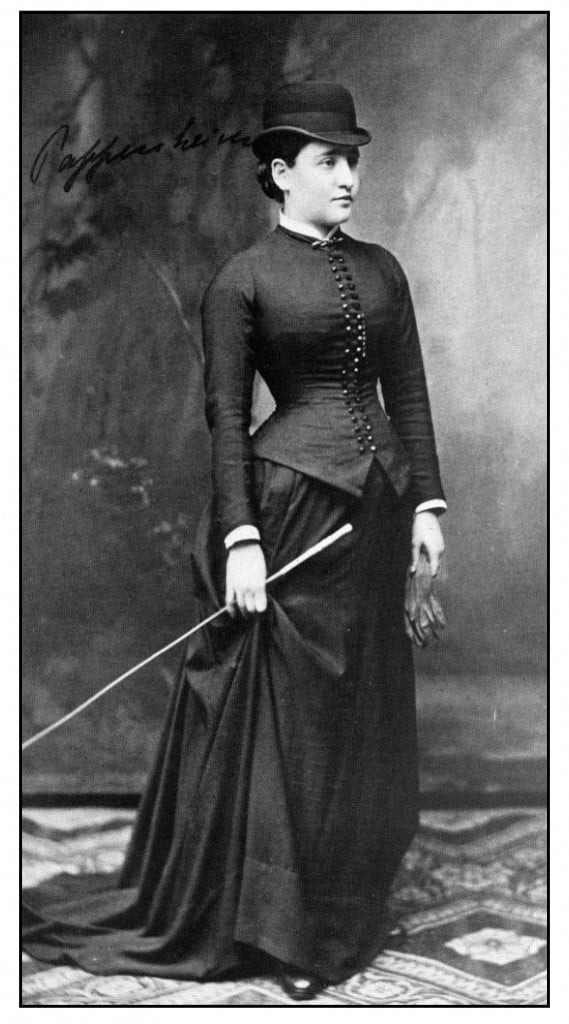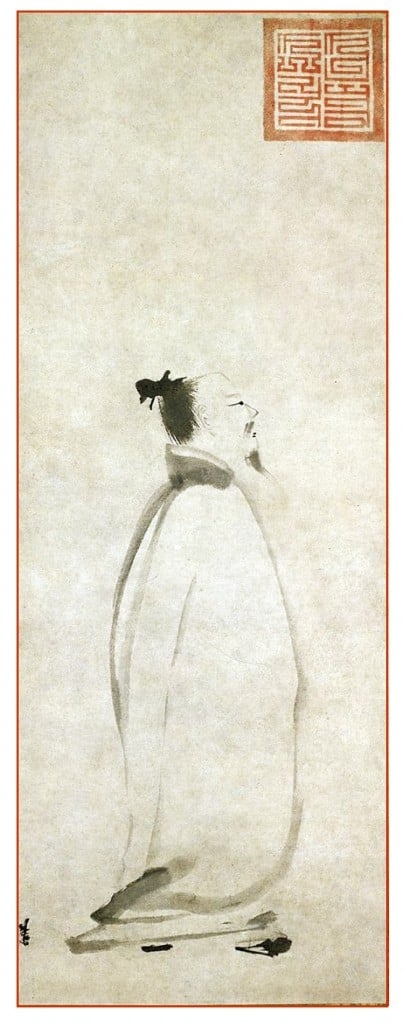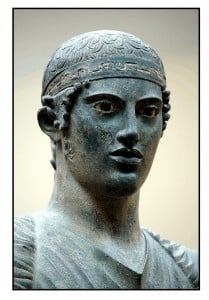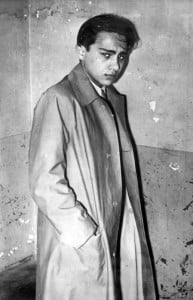This year winter has stayed longer than usual. The seas are warmer, the Arctic vortex has shifted, and the currents of cold air have veered southward. Yet spring has finally arrived. The snow recedes. Gray and granular patches still remain, but they are not for long. Uncovered, the grass slowly turns from brown to green. Some of the trees, willows in particular, have gained a light green mistiness. Promise of leaves. The creeks are awash with runoff water. Wild waves now ride where once was stillness, ice and rocks. Red-winged blackbirds have returned to join the stay-at-home robins. Occasional cardinals flaunt their crimson. Mallards and geese find stretches of open water in the ice. A peregrine falcon circles slowly. Scattered snowdrops break the ground. Intermittent crocuses begin to show in pale purple and white, and an isolated daffodil braves the cold. The stores are full of cut flowers from countries where spring comes early or from greenhouses where summer is eternal.
Story of Anna O
 The case of Anna O., reported by Josef Breuer and Sigmund Freud in their1895 book Studies on Hysteria, provides the initial evidence for the effectiveness of psychoanalytic treatment. The patient’s actual name was Bertha Pappenheim (Gay, 1988; Jones, 1953). For the case study, her initials were shifted one letter earlier in the alphabet, and she was given the pseudonym Anna. Since the publication of her story, so many people have given their opinion of what was wrong with her that truth is difficult to determine in the welter of interpretation (recent review by Skues, 2006).
The case of Anna O., reported by Josef Breuer and Sigmund Freud in their1895 book Studies on Hysteria, provides the initial evidence for the effectiveness of psychoanalytic treatment. The patient’s actual name was Bertha Pappenheim (Gay, 1988; Jones, 1953). For the case study, her initials were shifted one letter earlier in the alphabet, and she was given the pseudonym Anna. Since the publication of her story, so many people have given their opinion of what was wrong with her that truth is difficult to determine in the welter of interpretation (recent review by Skues, 2006).
In 1880, at the age of 21, Bertha Pappenheim became the patient of Josef Breuer. Breuer was 38-years old, a respected Viennese physician, famous for his earlier work in physiology. In 1868 he had shown that inflation of the lungs trigger pulmonary stretch receptors which through the vagus nerve then inhibit the inspiratory centers of the lower brainstem (Hering-Breuer reflex). In 1874 he had shown how the vestibular system was related to the sense of balance and not hearing (Mach-Breuer hypothesis). After his researches, Breuer had become a conscientious and caring physician. He described his new patient:
She was markedly intelligent, with an astonishingly quick grasp of things and penetrating intuition … She had great poetic and imaginative gifts which were under the control of a sharp and critical common sense … Her will-power was energetic, tenacious and persistent (Freud Standard Edition Volume II, p. 21)
Wine-Cup Immortal
 Li Bai (701-762 CE), also known as Li Po, was one of the famous Tang dynasty poets who called themselves the Eight Immortals of the Wine Cup (an irreverent allusion to the Eight Immortals of Taoism). Li Bai wrote prolifically, and over 1000 of his poems survive. Much of his life is mythical, the stuff of novels rather than of history (Elegant, 1997). He was a devotee of Taoism, a fine swordsman, and a great lover of wine. In his youth he served the emperor. After becoming involved in one of the rebellions, however, he was exiled from the court. He then spent much of his later life wandering “beyond the gorges” in the hinterland of Imperial China. Legend has it that he died drunkenly trying to embrace the moon’s reflection in the Yangtze River, but his death was perhaps a suicide. The illustrated portrait (from the Tokyo National Museum) was painted by Liang Kai in the early 13th century. The seal in the upper right corner signals that the painting was owned by Anigo, an important official in the Imperial court of the Yuan dynasty.
Li Bai (701-762 CE), also known as Li Po, was one of the famous Tang dynasty poets who called themselves the Eight Immortals of the Wine Cup (an irreverent allusion to the Eight Immortals of Taoism). Li Bai wrote prolifically, and over 1000 of his poems survive. Much of his life is mythical, the stuff of novels rather than of history (Elegant, 1997). He was a devotee of Taoism, a fine swordsman, and a great lover of wine. In his youth he served the emperor. After becoming involved in one of the rebellions, however, he was exiled from the court. He then spent much of his later life wandering “beyond the gorges” in the hinterland of Imperial China. Legend has it that he died drunkenly trying to embrace the moon’s reflection in the Yangtze River, but his death was perhaps a suicide. The illustrated portrait (from the Tokyo National Museum) was painted by Liang Kai in the early 13th century. The seal in the upper right corner signals that the painting was owned by Anigo, an important official in the Imperial court of the Yuan dynasty.
Appreciating Chinese poetry requires seeing as well as hearing. The beauty of the calligraphy is as important to the poetry as the music of the words. The poems are therefore difficult to assess without some feeling for the characters in which they are written, since these allude to meanings beyond those directly expressed by the spoken words. This post therefore begins with a few notes on Chinese characters.
Sense of Sin
Regret is an essentially human emotion. We make mistakes. If the mistake is without serious consequence we may just feel foolish; if it shows us as less than ideal we might feel shame; if it causes others to suffer we feel guilty; if it contradicts the law of god we feel a sense of sin. This is an overly simplistic taxonomy of what might be called the negative social sensations, in contrast to such positive sensations as friendship, compassion and love.
Social sensations provide the basis for religion. In the Eastern religions, our fate (karma) in this life and in later reincarnations is determined by how well we have followed the way of justice (dharma). In the monotheistic religions that come from Abraham, however, justice has a personal edge. Wrongdoing becomes a sin against God’s law and incurs his wrath.
Point of View
Point of view is an essential concept in both philosophy and art. In philosophy, point of view highlights the problem of conscious experience. To understand the consciousness of another individual we must be able to experience that individual’s point of view. This may be partially possible among individuals of the same species and culture. Yet, as Thomas Nagel (1974) points out, this becomes next to impossible when the individuals use different perceptual processes. Bats determine where things are in space by perceiving the echoes of their own ultrasonic sounds. We can track the sounds as they are emitted and received; we can record the response of the bat’s neurons to these sounds; yet we will never really understand what it is like to be a bat.
Journey of the Magi
A blog for the season. One of the most vivid and intriguing Christmas stories concerns the visit of the Magi from the East:
Now when Jesus was born in Bethlehem of Judaea in the days of Herod the king, behold, there came wise men from the east to Jerusalem,
Saying, Where is he that is born King of the Jews? for we have seen his star in the east, and are come to worship him. (Matthew 2: 1-2)
In 1461 Benozzo Gozzoli completed a sequence of frescos depicting the Journey of the Magi for the Palazzo Medici Riccardi in Florence. Illustrated below is the first of these paintings. A crowd of important people follow the Magi toward Bethlehem. At their head can be recognized the great lords of Florence, Sforza and Rimini. Among the crowd are diplomats and scholars from the Byzantine Empire (see previous blog). Indeed, one of the Magi is thought to represent the Emperor John VII Palaeologus. The painting commemorates the Council of Florence (1439), when representatives of the Eastern and Roman Churches had met in an unsuccessful attempt to reconcile their doctrinal differences. The Byzantine visitors were probably as exotic to the Italians of the 15th century as the Magi were to the Jews of the first.
Late Byzantine
The Byzantine Empire began with the founding of the city of Constantinople by the Emperor Constantine the Great in 330 CE. By the 12th century Constantinople was the largest and richest city in Europe. Byzantium maintained its glory until the sacking of of the city by the forces of the Fourth Crusade in 1204 CE. After this the Byzantine Empire existed only in fragments. The Ottoman conquest of the Constantinople in 1453 CE ended the empire, replacing Eastern Christianity with Islam.
The art and architecture of the Byzantine Empire is justly famous. Buildings such as the Hagia Sophia taught the world the use of space; the mosaics of Ravenna, Venice and Palermo gave the Christian religion its iconography. This is the Byzantium of Yeats’ poem Sailing to Byzantium (1927)
O sages standing in God’s holy fire
As in the gold mosaic of a wall,
Come from the holy fire, perne in a gyre
And be the singing-masters of my soul.
Apollo’s Gaze
 The Charioteer of Delphi is a life-size bronze statue erected in 474 BCE to commemorate a victory in the chariot races of the Pythian games. The statue’s left arm is missing; the reins held in his right hand are no longer connected to his steeds; the headband has lost its silver inlay. Yet the glass eyes and copper eyelashes are remarkably well preserved. The charioteer’s head and gaze are inclined to the side. This is one of the first direct interactions between a work of art and the viewer. He looks at you as much as you at him. The look is piercing.
The Charioteer of Delphi is a life-size bronze statue erected in 474 BCE to commemorate a victory in the chariot races of the Pythian games. The statue’s left arm is missing; the reins held in his right hand are no longer connected to his steeds; the headband has lost its silver inlay. Yet the glass eyes and copper eyelashes are remarkably well preserved. The charioteer’s head and gaze are inclined to the side. This is one of the first direct interactions between a work of art and the viewer. He looks at you as much as you at him. The look is piercing.
The statue likely portrays the winning charioteer. However, it may also represent Apollo, the divine patron of the Pythian games. Apollo was the sun-god, having assumed this role from the Titan Helios of earlier mythology. Apollo was a god of many facets: the god whose chariot carried the sun across the sky, the god of music and the leader of the muses, the god of prophecy and poetry, the god of light and truth. Though generally beneficent, Apollo was sometimes dangerous. The horses of the sun’s chariot occasionally ran wild and caused widespread destruction. This has been attributed to Phaethon, the son of Helios, though these may both be manifestations of Apollo.
Versions of History
On August 22, 1938, the Nazi government revoked the permits allowing Polish Jews to live in Germany. Between September 27 and 29, 12,000 Jews were deprived of their possessions, transported to the Polish border, and left there without food or shelter. Polish officials allowed them across the border, even though many no longer possessed Polish papers. The Jews were housed in makeshift accommodation in the town of Zbaszyn. They were hungry and desperate.
Among the expelled Jews was the Grynszpan family from Hannover. Esther Grynszpan sent a postcard asking for help to her 17-year-old brother Herschel, who was staying illegally with relatives in Paris. Herschel received his sister’s postcard on November 3. On November 6 he tried to convince his uncle to send money to Poland to help his family. A violent argument developed, and Herschel stormed out into the night.
The next morning Herschel bought a revolver, and went to the German Embassy. He claimed to have important documents to submit to an embassy official, and was ushered into the office of Ernst vom Rath, a 29-year-old diplomat. A few minutes later, Herschel shot vom Rath in the stomach. Herschel was taken into custody by the French police. (The photograph shows him at the time of his arrest.) Vom Rath was taken to hospital where he died two days later on November 9.
Still Life
The genre of painting known as “still life” deals with our perception of the natural world. As such it has much in common with the empirical sciences.. However, whereas the scientist analyses the world, the artist tries to recreate it.
The still-life artist selects and arranges what will be depicted. If landscape is observation, then still life is experiment. The view of the world typically includes artificial as well as natural objects. More often than not, the arrangement of the objects provides a moral meaning, typically one related to transience or “vanity.” The still-life painting thus comments on both the nature of reality and the process of creation.



